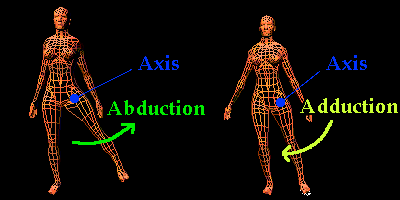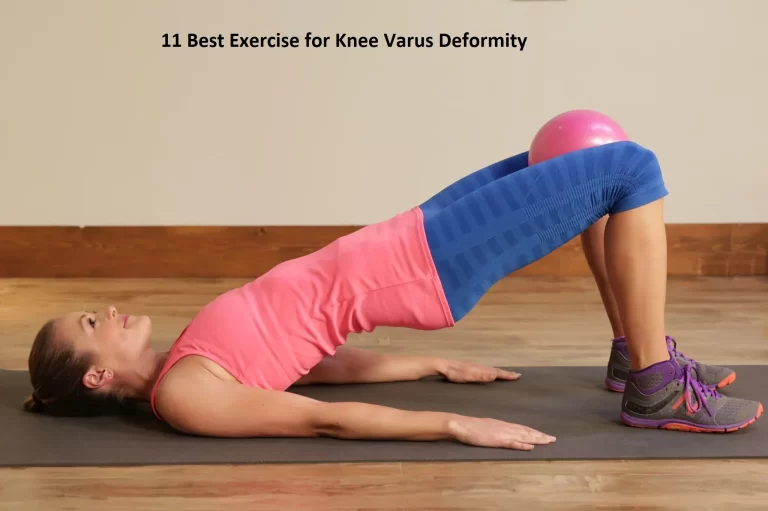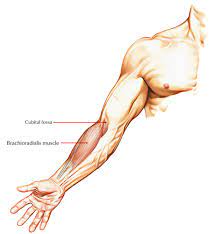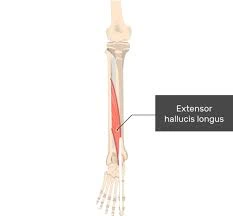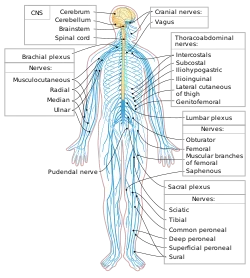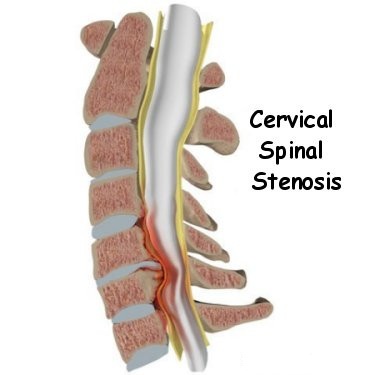Hip Abduction And Adduction
Table of Contents
What is a Hip Abduction And Adduction?
Hip abduction and adduction are fundamental movements of the hip joint that involve the horizontal movement of the leg away from or toward the midline of the body, respectively. These movements play a crucial role in various activities like walking, running, and sports that require lower body strength, stability, and coordination.
Hip Abduction is the movement from the hip joint in which the leg moves away from the midline of the body. When you perform hip abduction, you are moving your leg outwards, away from the center of your body. This movement primarily targets the muscles responsible for abducting the hip joint, including the gluteus medius and gluteus minimus. These muscles are located on the outer side of the hip and are important for stabilizing the pelvis, maintaining balance, and supporting proper alignment during activities.
Hip Adduction: On the other hand, hip adduction refers to the movement of the leg towards the midline of the body. This movement involves bringing the leg back inwards, towards the center of the body. Hip adduction recruits the muscles responsible for adducting the hip joint, such as the adductor magnus, adductor longus, adductor brevis, and gracilis. These muscles are situated on the inner side of the thigh and are involved in activities like crossing one leg over the other, changing direction, and lateral movements.
Both hip abduction and adduction movements are important for maintaining balance, stability, and proper biomechanics during daily activities and athletic performance. Strengthening these muscles can help improve lower body strength, enhance sports performance, prevent injuries, and promote overall functional movement. Various exercises, such as side leg raises for abduction and standing cable adductions for adduction, can target these movements and help develop the respective muscles.
Hip Abduction
What is Hip Abduction?
- Hip abduction: Movement of the leg away from the body’s midline. This involves activating and contracting the muscles responsible for moving the hip joint outward. The primary muscle involved in hip abduction is the gluteus medius, located on the outside of the hip.
Hip abduction is an important movement in various daily activities and sports. It is often used in exercises such as side lunges, side legs, and side bands. In addition, hip abduction is important for maintaining stability and balance while walking, running, and more functional movements.
Strengthening the hip abductors can have several benefits, including improved hip stability, increased lateral leg strength, improved athletic performance, and reduced risk of certain injuries. Physical therapists, trainers, and athletes often include specific exercises that target the pelvis. recruit muscles into your exercise programs to promote overall lower body strength and stability.
Hip Abductors Muscles
The hip abductors are a group of muscles that are located on the outside of the hip and are responsible for hip abduction movement. These muscles work together to move the foot away from the midline of the body. The main hip abductor muscles are:
- Gluteus Medius: This is the largest and strongest muscle involved in hip abduction. It is located at the outer surface of the hip and plays an important role in stabilizing the pelvis during walking and other weight-bearing activities.
- Gluteus Minimus: This muscle is located below the gluteus medius and has a similar function in hip capture and stabilization. It is located deeper and more towards the front of the pelvis.
- Tensor Fasciae Latae (TFL): This muscle is located on the front and side of the hip. It helps the pelvis abduction and hip flexion and internal rotation.
- Sartorius: The Sartorius muscle is primarily known for its role in hip flexion and knee flexion. also promotes hip abduction. It is a long, thin muscle that crosses the front in a diagonal motion and ends in the thigh.
These muscles work in coordination to produce a hip abduction movement. Reinforcement and Rehabilitation of these muscles can help improve hip stability, improve athletic performance, and reduce the weight loss risk of certain hip and lower body injuries. Exercises such as side leg raises, side lunges, lunges, and resistance band exercises are commonly used to target and strengthen the hip abductor muscles.
ROM of Hip Abduction
Hip abduction range of motion refers to the degree of motion that can be achieved by moving the leg away from the midline of the body. This involves the lateral movement of the thigh away from the center of the body. The normal range of motion for hip abduction in adults is usually around 45-50 degrees.
Again, it is important to note that range of motion can vary from person to person depending on factors such as flexibility, age, fitness, and individual anatomical differences. Some people may have a greater range of motion in hip abduction due to natural flexibility or training, while others may have a limited range of motion due to factors such as tight muscles or joint restrictions. Maintaining good hip abduction is important for various activities such as walking, running, lateral movements, and exercises that involve lateral movements of the legs. It helps maintain stability, balance, and overall lower body.
How to Check ROM of Hip Abduction
The hip abduction range of motion can be checked using a simple measurement technique. Here’s a step-by-step guide to testing hip abduction range of motion:
- Position: Begin by having the subject lie on a flat surface such as a treatment table or exercise mat. Make sure their legs are fully extended and relaxed.
- Alignment: Make sure the person’s body is properly aligned. The back should be in a neutral position and the legs should be parallel to each other.
- Starting position: Stand next to the person being assessed. Place one hand on the hip to stabilize it and prevent rotation or movement during the assessment.
- Measurement: Grasp the person’s ankle or lower leg on the side being assessed with the other hand. Carefully lift and abduct the leg away from the midline of the body, keeping the knee straight.
- Range of motion: Slowly move the leg away from the midline until you feel resistance or tension. The maximum angle you can move your leg away from the midline without discomfort or restriction represents the hip abduction range of motion.
- Measuring tools: You can use a goniometer, a special device for measuring joint angles, to accurately digitally measure the hip abduction range of motion. Align the arms of the goniometer along the long axis of the femur (femur) and the midline of the body. Note the angle indicated on the goniometer when a maximum range of motion is reached.
- Repeat: To get a more accurate estimate, repeat the process a few times and average the measurements.
Hip Abduction Test
You can test hip strength using the following method:
- Position: Ask the patient to lie on their side on a flat surface, such as a treatment table or an exercise mat. Make sure their body is properly aligned, with a neutral back and feet together.
- Stabilization: Stand behind the person and stabilize yourself. Place one hand on the subject’s hip to prevent movement or rotation during the test.
- Starting position: Support the person’s lower leg above the ankle with the other hand to control the movement. A person’s knee must be straightened.
- Trial Movement: Instruct the person to lift the upper body up, away from the lower leg, keeping the knee straight. They should perform this movement by activating the hip abductor muscles.
- Resistance: Use light resistance against the upward movement of the leg. Resistance should be gradually increased as the person exerts maximum effort to abduct the leg.
- Assessment: Observe the person’s ability to maintain proper form and the strength they exert against resistance. Assess their ability to lift their leg against gravity and the resistance you provide.
- Strength Assessment: Assess strength on a scale of 0-5 using a manual muscle test:
- 5/5: Full Strength – A person can move against maximum resistance.
- 4/5: Good Strength – A person can overcome moderate resistance.
- 3/5: moderate strength – a person can overcome gravity, but not resist it.
- 2/5: Weak strength – a person can start a movement, but cannot complete it against gravity.
- 1/5: Residual strength – the muscles contract, but the joint does not move.
- 0/5: No force – No muscle contraction is observed. Repeat the test on both sides to compare hip strength between limbs.
Exercise For Hip Abduction
- Side-Lying Leg Lifts:
-Legs should be straight and piled one atop the other when you lay on your side. Use the muscles in your core to stabilize yourself.
- Lift the upper leg up, keeping it straight. As high as you can bear comfortable raising it rotating the pelvis. – Hold the raised position for a while and then slowly lower your legs back down.
- Do as many repetitions as you want and then switch to the other side.
2. Clamshells:
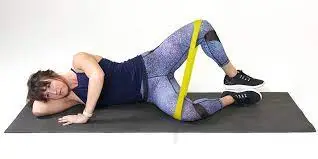
- Legs bowed and knees together, lie on your side. Your hips should be up each other – Keep your feet together, lift your upper knee, keeping your feet in contact with each other.
- Open your knees as wide as is comfortable while maintaining control and stability.
- Hold the open position briefly and then slowly lower the knee.
- Do as many repetitions as you want and then switch to the other side.
3. Standing Hip Abduction with Resistance Band:
- Attach the resistance around the ankles or just above the knees.
- Engage your core muscles while you stand with your feet apart.
- Shift your body weight onto one leg and slightly bend your knee.
- Keeping the opposite leg straight, lift it to the side against the resistance of the strap.
- Control the movement and bring the leg back to the starting position. – Do as many repetitions as you want and then switch to the other leg.
4. Side Band Walks:
- Just above your knees, wrap the resistance band across your thighs.
- Standing with your feet hip-width apart, bending your knees just a little.
- Take a step to the side with one leg, keeping tension on the resistance band.
- Bring the other leg to the first leg, keeping tension on the band as you move. – Continue to step aside for the desired number of steps in one direction and then repeat in the other direction.
5. Side leg raises while standing:
- Stand tall with your feet wide apart and engage your core for stability. Place your weight on one leg, bending the knee just a little.
Keeping the opposite leg straight, lift it as far as possible to the side, maintaining control and stability.
Keep your toes pointing forward.
Stay in the raised position for a moment, focusing on squeezing the hip abductors.
Repeat for the desired number of repetitions on one side, then switch to the other side.
These exercises target the hip abductor muscles, mainly the gluteus medius and gluteus minimus muscles. It’s important to start with a weight or resistance level that challenges you but allows for proper form. As you grow stronger, gradually up the intensity and repetitions.
A Special test for Hip Abduction
In the clinical setting, several specialized tests are used to evaluate specific aspects of hip abduction. Here are two commonly used specific hip abduction tests:
- Trendelenburg test:
- Ask the person being assessed to stand with their feet together.
- Watch their hips move as they lift one leg off the ground and balance on the other leg.
- Watch for pelvic drop or tilt on the unsupported side. – A positive Trendelenburg test is obtained when the pelvis drops or tilts down on the unsupported side, indicating weak hip abductors on that side.
2. Ober’s Test:
- Ask the patient to lie on his side with the leg bent for support.
- Bend the person’s knee and upper hip 90 degrees and keep it still.
- Stabilize the person’s pelvis to prevent movement. – Slowly lower the person’s upper leg down to hip abduction, removing it from the body.
- Observe the ability of the leg to reach or fall below the horizontal position.
- Ober’s test is positive if the person is unable to fully adduct the hip or if the leg remains elevated during the abduction, indicating tension or contraction of the hip abductor muscles, especially the tensor fasciae lata (TFL) and iliotibial band (ITB).
Hip Adduction
What is Hip Adduction?
- Hip adduction is a term used to describe the movement of the leg or thigh toward the midline of the body. It refers to the act of bringing one foot closer to the other, crossing the midline of the body. In hip adduction, the leg moves in from a position where it extends straight out.
The hip adductor movement involves the contraction of the hip adductor muscles on the inner thigh. These muscles work together to move the foot toward the midline. The main hip adductor muscles are adductor longus, adductor brevis, magnus, gracilis and pectineus.
Hip adduction plays an important role in a variety of activities, including walking, running, changing direction, and maintaining stability during movement. This is essential for movements that require bringing the legs together, such as crossing one leg over the other or moving from a wide stance to a narrow stance.
Strengthening the hip adductor muscles can improve lower body stability, balance, and overall lower extremity function. To improve the strength and coordination of these muscles, hip adduction exercises can be added to a varied exercise program.
Hip Adductor Muscles
The hip adductors, also known as adductors, are a group of muscles located on the inner thigh. These muscles play an important role in the stability and movement of the hip. The hip adductors’ primary job is to move the thigh toward the midline of the body, a movement known as hip adduction.
The adductor group of the hip joint consists of several muscles. The most important are:
- Adductor Magnus: This is the largest and strongest muscle of the group. It originates from the pubic bone and the ischium (lower part of the pelvis) and passes over the linea aspera, or femur (thigh), at the posterior edge. It helps with hip adduction and also helps with hip extension and medial rotation.
- Adductor Longus: This muscle runs from the pubic bone to the middle third of the linea aspera. It is responsible for connecting the hip joint and also helps stabilize the pelvis when walking or running.
- Adductor Brevis: This muscle lies deep to the adductor longus and passes over the pubic bone into the linea aspera, just below the insertion of the adductor longus. It helps with hip adduction and also helps with hip flexion.
- Gracilis: Although not part of the primary hip adduction, it is often included because of its role in hip adduction. It runs from the pubic bone to the tibia (shin bone), crossing both the hip and knee joints. Not only does it help with hip adduction, but it also helps with knee flexion and internal rotation.
These muscles work together to produce movements such as bringing the legs together, crossing the legs, or stabilizing the pelvis during activities such as walking, running, and standing. Strengthening the hip adductor muscles can be beneficial to improve lower body stability, and athletic performance and prevent hip and groin-related injuries.
ROM of Hip Addiction
Range of motion in hip adduction refers to the range of motion the hip can achieve by bringing the thigh toward the midline of the body. Range of motion can vary from person to person and can be affected by factors such as flexibility, muscle strength, and any underlying disease or injury.
Normal hip adduct range of motion in adults is usually measured with a goniometer, a device that measures joint angles. In a standing position, with the hip joint in a neutral position, the average range of motion of hip adduction is about 20-30 degrees. This means that the thigh can move inward, towards the midline of the body, about 20-30 degrees from the starting position. It is important to note that many factors can affect a range of motion, including individual differences, muscle imbalances, and joint limitations. Athletes and individuals who participate in activities that require greater mobility of the hips, such as dancers or martial arts, may show an increased range of motion due to exercise and flexibility.
How to Check ROM of Hip Adduction
You can check the hip adduction range of motion with a simple goniometer measurement.
- Preparation: Find a clear, open space where you can move comfortably. You may also need a protractor, which is a tool used to measure common angles. Make sure the goniometer is properly calibrated and ready for use.
- Position: Stand tall with your feet shoulder-width apart. Make sure your hips are in a neutral position, facing forward. Maintain good posture during the assessment.
- Starting position: Place one hand on the hip on the side you want to evaluate. This arm will help you detect your pelvic movements during the test. Hold the goniometer with the other hand. 4. Align the goniometer: Place the fixed arm of the goniometer parallel to the floor and level with the midline of your body. The moving hand must be in line with the femur (thigh bone).
- Movement: Slowly lift the leg from the side being evaluated and begin to move it across the body towards the midline. Let the movement happen naturally, without forcing it.
- Measurement: When you reach the end of a comfortable range of motion, stop and hold the position for a moment. At this point, check the angle between the fixed arm and the moving arm of the goniometer. This angle represents your hip adduction range of motion. 7. Save: Save the measured angle for later reference or comparison. You can repeat the measurement a few times to ensure accuracy and consistency.
Hip Adduction Test
The hip adduct test, also known as the Ober test, is a clinical assessment that uses the hip adductor muscles, specifically the tensor fasciae latae (TFL), iliotibial band (ITB), and gluteus medius and minimus. The test is performed as follows:
- Preparations: Lie on your healthy side (the side you are not testing) on a flat surface, such as an exam table or mat. Keep your leg straight and slightly bend your top knee.
- Positioning: A healthcare professional or researcher will stand behind you and help perform the test. They line up on the testing side.
- Starting position: The examiner lifts your leg and fully flexes the hip joint, keeping the knee bent. The thigh should be parallel to the examination table or mat.
- Movement: The examiner then slowly extends the pelvis with the knee bent. They also keep the legs in line with the body.
- Observation: With the pelvis extended, the examiner gradually lowers your legs to the table or mat.
- Evaluation: the test evaluates the ability of the hip muscles to extend and allow the leg to extend to the table or mat. If the leg remains off the ground, it indicates tension or contraction of the hip adductors, especially the TFL, ITB, gluteus medius, and minimus.
- Measurement: The angle at which the foot is from the ground is recorded and compared to the expected range of motion. This provides information about the tightness or limitations of the hip adductors.
It is important to note that the Ober test primarily assesses the tensor fasciae latae ligament, the iliotibial band, and the gluteus medius and minimus, not all of the hip adductor muscles. Other tests and assessments may be used to evaluate specific adductor muscles as needed.
Hip Adduction Exercises
Hip adduction exercises target the muscles responsible for moving your legs toward the midline of your body. Here are three effective exercises to contract your hips:
- Standing Cable Hip Adduction:
- Attach the ankle to the low pulley of the cable machine and attach it to the ankle.
- Stand perpendicular to the machine so that the leg of the cuff is farthest from the machine.
- Keeping the supporting leg slightly bent and the heart engaged, slowly move the wrist across the body toward the midline.
- At the peak of the movement, pause for a brief second before going back to the beginning position.
- Do 10-15 repetitions with each leg, 2-3 series.
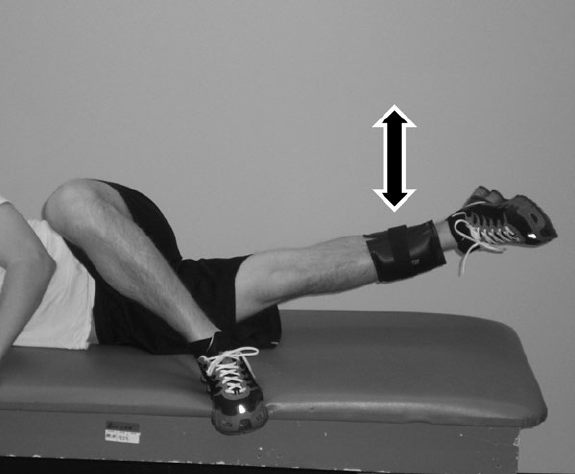
2. Side-Lying Hip Adduction:
- Stack your legs on top of one another while lying on your side.
- Bend your leg slightly to stabilize your body.
- Raise your upper leg to the ceiling, keeping it straight, until you feel a contraction in your inner thigh.
- Hold for a moment and then slowly lower your legs.
- The goal is to do 12-15 repetitions on each side in 2-3 sets.
3. Seated Hip Adduction Machine:
- Sit on the hip extension machine with your back against the backrest and your feet on the footrests.
- Adjust the machine so that your knees are on the axis of rotation.
- Press your legs together, bringing the pads towards each other until you feel a contraction in your inner thighs.
- Hold the pressure for one second, then release and return to the starting position.
- Do 10-12 repetitions for 2-3 sets.
Special Test For Hip Adduction
There is no specific “specific test” for hip adduction, but there are clinical tests that can assess hip adduction muscle strength and function. Here are the two most common tests used to evaluate hip joint dependency:
- Manual Muscle Testing (MMT) for hip adduction:
- MMT assesses the strength of the hip adductors by applying resistance while the person performs the movement.
- The subject lies on his back with his legs extended.
- The examiner stabilizes the pelvis and applies resistance to the inside of the knee of the tested leg while the person tries to move the leg toward the midline against the resistance. – The researcher evaluates the strength on a standard scale, which usually ranges from 0 to 5, where 5 is normal strength and 0 means no muscles.
2. Compression test:
- Push-ups are an easy way to assess hip joint strength and coordination.
- The subject sits on a stable platform with knees bent and feet on the ground.
- They put a small ball or pillow between the knees.
- The person is advised to press the ball or pillow as hard as possible with the knees, maintaining the correct position and without compensatory movements.
- The inspector observes and evaluates the strength and symmetry of the compression.
These tests can provide valuable information about the strength and function of the hip adductor muscles.
Summary
Hip abduction and adduction are movements of the hip joint that involve the leg moving away from or toward the midline of the body, respectively. Hip abduction is the movement of the leg away from the midline, targeting the muscles responsible for abducting the hip, such as the gluteus medius and gluteus minimus.
This movement is important for balance, stability, and alignment. Hip adduction is the movement of the leg towards the midline, recruiting muscles like the adductor magnus and adductor longus. It is involved in activities like changing direction and lateral movements. Strengthening these muscles is beneficial for lower body strength, sports performance, injury prevention, and functional movement. Exercises like side leg raises and standing cable adductions can be used to target these movements.
FAQs
Hip abduction and adduction are fundamental movements of the hip joint that involve the horizontal movement of the leg away from or toward the midline of the body, respectively. These movements play a crucial role in various activities like walking, running, and sports that require lower body strength, stability, and coordination.
When activated in a closed loop, the hip adductors help stabilize the pelvis and lower limbs during the stance phase of walking and help control posture. In addition, they play supporting tasks such as hip flexion and rotation.
Abduction is movement away from the midline – just as abduction is displacement. For example, a shoulder abduction raises the arms out to the sides of the body. Adduction is a movement toward the midline. Hip adduct compresses the legs.
The purpose of abduction is for core strength, balance, and athletic performance. The hip joints assist rotate the thigh in the hip socket and stabilize the hip joint in addition to shifting the leg away from the midline of the body. Abductors connect the pelvis to the femur (femur).
These two muscle groups work in tandem to support the hip and pelvic joints. The glutes are worked, core stability is enhanced, and hip and knee discomfort can be relieved by strengthening weak hip abductors and adductors.

